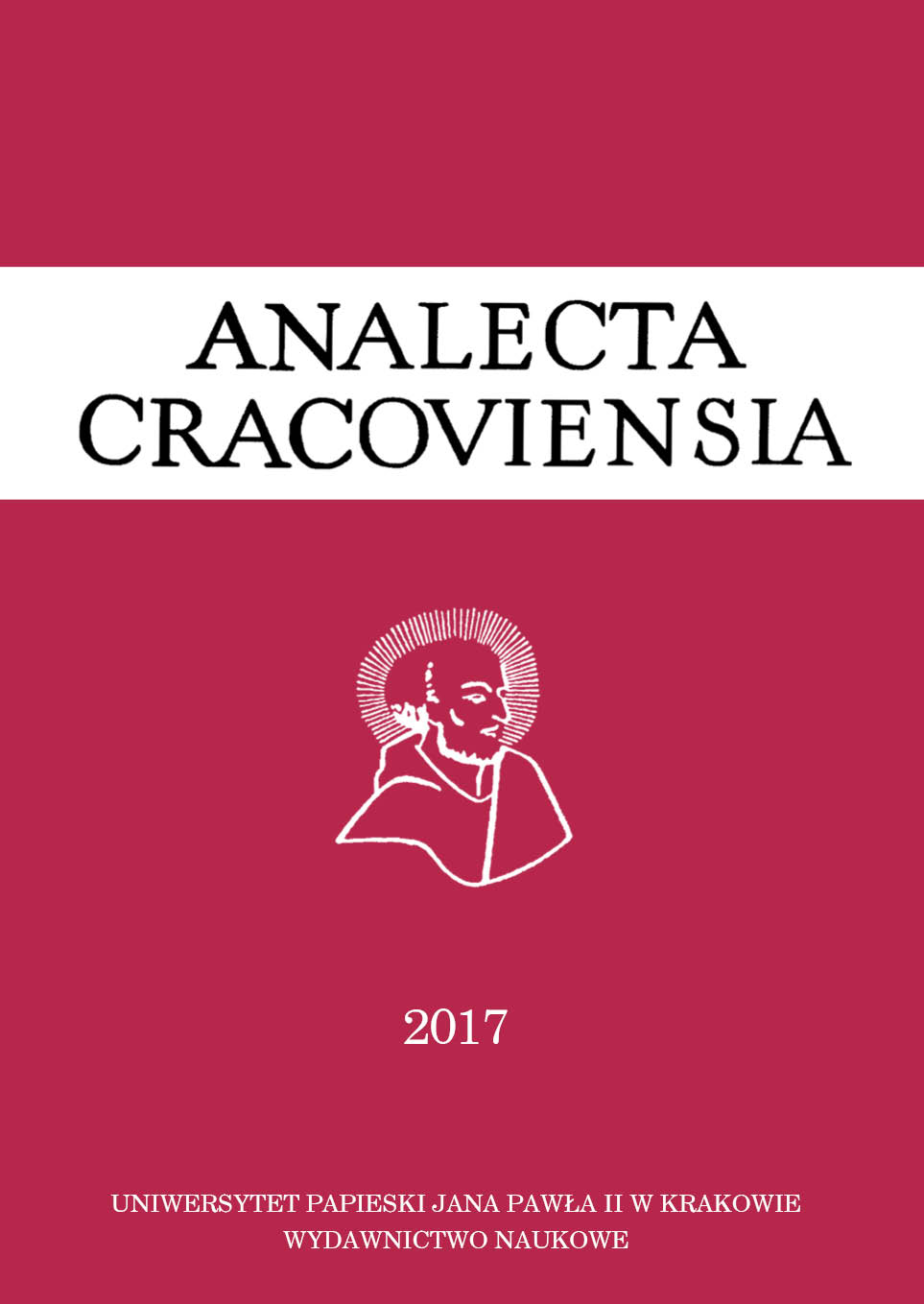Antidemonic feature of sacraments: the Eucharist
DOI:
https://doi.org/10.15633/acr.2401Keywords:
The Eucharist, Jesus Christ, the Paschal Mystery, liberation, Satan, exorcism, possessionAbstract
The life and work of Jesus Christ are salvific and liberating from the power of the evil spirit. From this perspective, the institution of the Eucharist and giving Himself to the faithful as Nourishment are remarkably antidemonic deeds that free from the power of the spirits of darkness and are an indispensable aid for both Christians in the daily spiritual struggle and for the possessed on the path to liberation.
Also liturgical feature of the Sacrament contains many references to the glorious victory of Christ over Satan and incessant begging to keep people away from his influence. However, the Eucharist is not a tool for the liberation of the possessed from the power of the demon but constitutes a fundamental element of the process of liberation through exorcism.
References
Acta Synodalia ann. 50–381, t. 1, red. A. Baron, H. Pietras, Kraków 2006.
Acta Synodalia ann. 431–504, t. 6, red. A. Baron, H. Pietras, Kraków 2011.
Amorth G., Nowe wyznania egzorcysty, Częstochowa 1998.
Amorth G., Wyznania egzorcysty, Częstochowa 1997.
Augustyn, Państwo Boże, tłum. W. Kubicki, Kęty 1998.
Benedykt XVI, adhort. apost. Sacramentum caritatis, Kraków 2007.
Benedykt XVI, enc. Deus Caritas est, Katowice 2006.
Brunot A., Miriam. Mała Arabka, tłum. T. Szczepańczyk, Gdańsk 2006.
Cristiani L., Znaki obecności szatana we współczesnym świecie, tłum. J. Irzykowski, Gdańsk 1995.
Guerra Burgos M., Satanizm i lucyferyzm jako formy alternatywnej i magicznej religijności naszych czasów, [w:] Egzorcyzmy dawniej i dziś, red. B. Barkowski, A. Posacki, Warszawa 2004, s. 95–135.
Guzowski K., Duch dialogujący, Lublin 2016.
Jan Kasjan, Rozmowy z ojcami, t. 1, tłum. A. Nocoń, Kraków 2002.
Jan Paweł II, enc. Dominum et vivificantem, Wrocław 1994.
Katechizm Kościoła Katolickiego, Poznań 1994.
Komunia święta i kult tajemnicy eucharystycznej poza Mszą świętą, Katowice 1985.
Kongregacja Nauki Wiary, list Inde ab aliquot annis, 29.09.1985, AAS 77 (1985), s. 1169–1170.
Kozłowski J., Z doświadczeń modlitwy o uwolnienie i uzdrowienie, [w:] Egzorcyzmy dawniej i dziś, red. B. Barkowski, A. Posacki, Warszawa 2004, s. 67–74.
Laurentin R., Szatan. Mit czy rzeczywistość?, tłum. T. Szafrański, Warszawa 1997.
Maciążek W., Grzech pierworodny jako negacja wdzięczności, „Teologia w Polsce” 9 (2015) nr 1, s. 149–159.
Misiarczyk L., Opętania i egzorcyzmy – nowe wyzwania dla teologii XXI wieku, „Studia Nauk Teologicznych” 9 (2014), s. 247–257.
Mszał Rzymski dla diecezji polskich, Poznań 1986.
Ogólne wprowadzenie do Mszału rzymskiego: z trzeciego wydania Mszału Rzymskiego: Rzym 2002, Poznań 2004.
Rytuał Rzymski. Egzorcyzmy i inne modlitwy błagalne, Katowice 2002.
Sobór Watykański II, dekret Presbyterorum ordinis, [w:] Sobór Watykański II, Konstytucje, dekrety, deklaracje, red. M. Przybył, Poznań 2002, s. 478–508.
Szymborski J., „Cały świat leży w mocy Złego” (1 J 5, 19), [w:] Egzorcyzmy dawniej i dziś, red. B. Barkowski, A. Posacki, Warszawa 2004, s. 169–179.
Towarek P., Egzorcyzm. Historia, liturgia, teologia, Olsztyn 2013.
Downloads
Published
Issue
Section
License
Authors who publish with this journal agree to the following terms:
- Authors retain the copyright and full publishing rights without restrictions, and grant the journal right of first publication with the work simultaneously licensed under a Creative Commons Attribution 4.0 International License that allows others to share the work with an acknowledgement of the work's authorship and initial publication in this journal.
- Authors are able to enter into separate, additional contractual arrangements for the non-exclusive distribution of the journal's published version of the work (e.g., post it to an institutional repository or publish it in a book), with an acknowledgement of its initial publication in this journal.
- Authors are permitted and encouraged to post their work online (e.g., in institutional repositories or on their website) prior to and during the submission process, as it can lead to productive exchanges, as well as earlier and greater citation of published work (See The Effect of Open Access).

